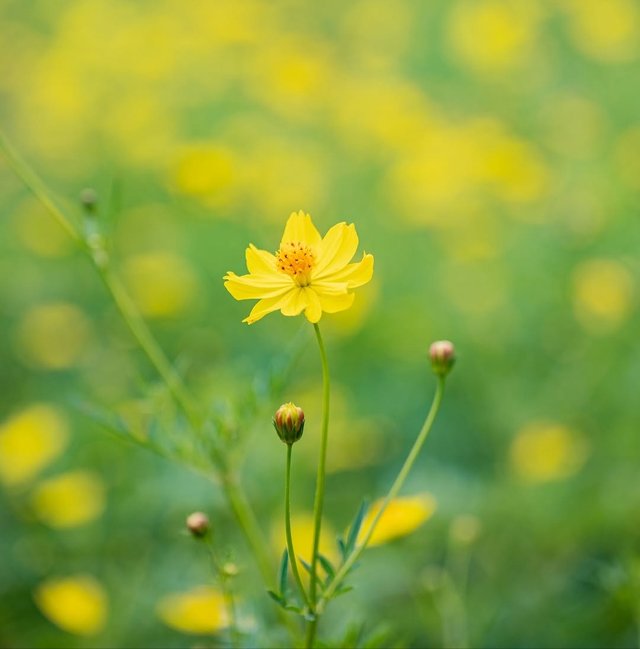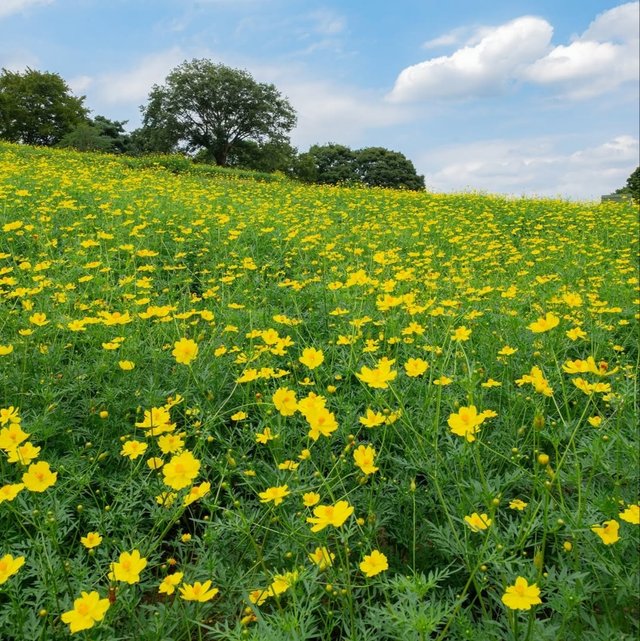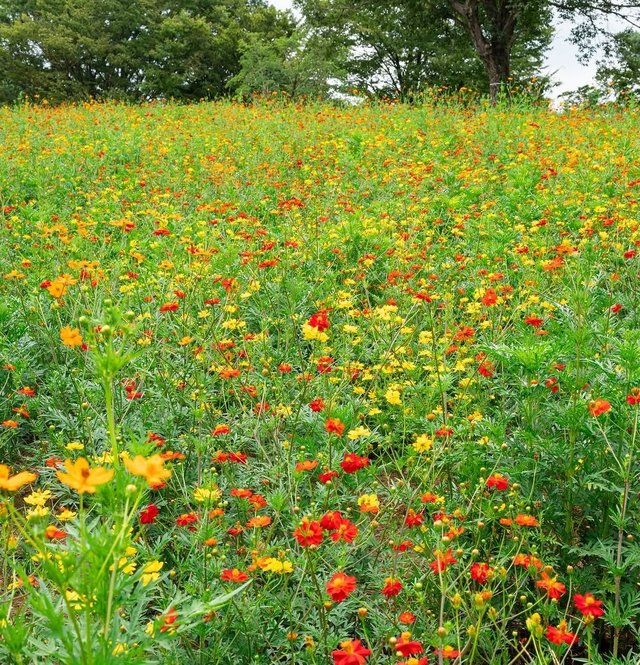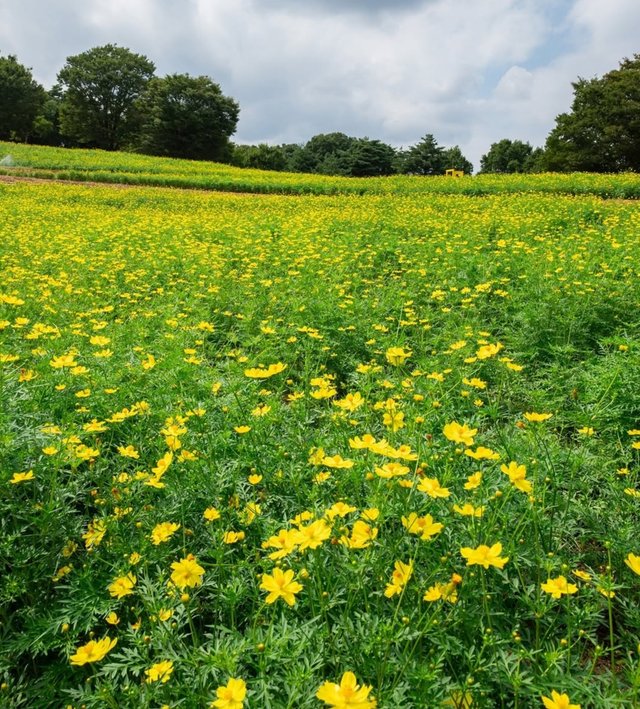Yellow Colour Sulfur Cosmos Flower
The Sulfur Cosmos is a dazzling annual flowering plant that brings a warm splash of orange, golden yellow, and flame-red shades to gardens and landscapes. Belonging to the Asteraceae family, this cheerful plant is native to Mexico, Central, and South America, but over time, it has spread across tropical and subtropical regions worldwide. Known for its resilience, long blooming season, and pollinator-friendly nature, the Sulfur Cosmos has become a favorite among gardeners and nature lovers alike.
Appearance and Characteristics
The Sulfur Cosmos is well-loved for its vibrant flowers, which resemble miniature suns. Unlike the more common pink and white Cosmos bipinnatus, this species produces warm-colored blossoms ranging from golden yellow to fiery orange.
Flowers: Daisy-like, about 4–6 cm across, with slightly fringed petals and a golden-yellow disc at the center.
Leaves: The foliage is fern-like, feathery, and pinnate, adding a delicate texture to the plant.
Height: Plants generally grow between 30 cm to 120 cm tall, depending on soil fertility and care.
Blooming Season: It blooms profusely from summer through fall, often lasting until the first frost in cooler climates.
Growing Conditions
Sulfur Cosmos is famous for being tough and low-maintenance, thriving even in poor soils where many flowers would struggle.
Soil: Prefers well-drained, moderately fertile soil but can tolerate sandy or rocky ground.
Sunlight: Requires full sun for best flowering performance.
Water: Drought-tolerant once established, making it an excellent choice for dry landscapes.
Propagation: Grown easily from seeds, which germinate quickly in warm soil. Direct sowing in the garden is common, though they can also be started indoors.
Because of its adaptability, it often self-seeds, coming back year after year in favorable conditions, even though it is technically an annual.
Ecological Importance
Sulfur Cosmos plays a vital role in the ecosystem by supporting pollinators.
Attracts Pollinators: Bees, butterflies, and hoverflies are frequent visitors, drawn to the nectar and pollen.
Beneficial for Birds: Small seed-eating birds, like finches, enjoy its seeds after flowering.
Companion Planting: It can serve as a natural attractant for beneficial insects, helping reduce pest populations in vegetable gardens.
Its ability to thrive in hot, sunny, and dry climates makes it a valuable plant in pollinator-friendly gardens, especially where other flowers might struggle.




%20(7).jpeg)